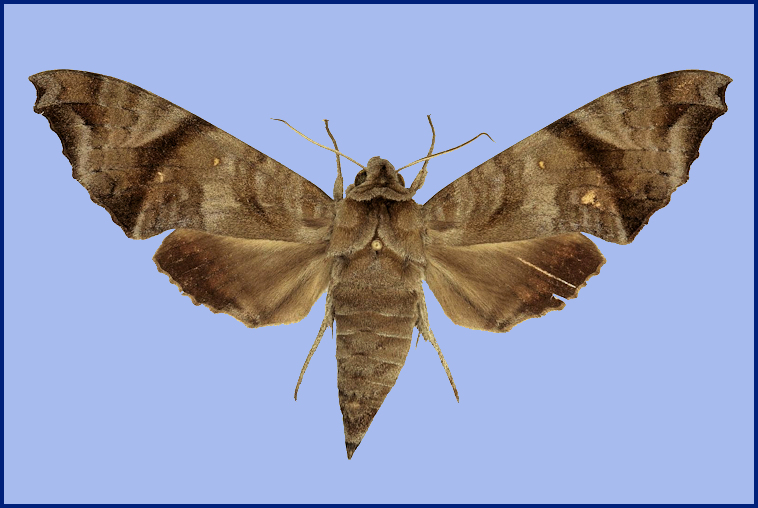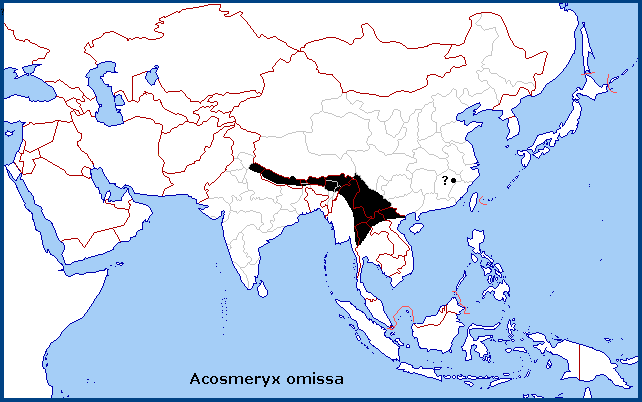
Acosmeryx omissa Rothschild & Jordan, 1903, Novit. zool. 9 (suppl.): 527 (key), 530. Type locality: Bhutan, Buxa.
Wingspan: 92--108mm. Very similar and easily confused with Acosmeryx sericeus. Upperside of body and wings more uniform in colour, much less variegated in with grey and chestnut than in Acosmeryx sericeus. Thorax underside more olivaceous than in Acosmeryx sericeus. Abdomen underside less bright tawny than in Acosmeryx sericeus. Forewing upperside with brown, curved, antemedial band less extended than in Acosmeryx sericeus, the two lines that form it being separate for the greater part; first discal line narrow, broken at the veins, as are the subsequent lines; the bars between veins CuA1 and CuA2 of lines 3 and 4 heavier and closer together, often forming a single patch; an oblique band present, positioned as in Acosmeryx sericeus, narrower anteriorly, somewhat dilated distad at vein M2. Both wings undersides with costal margins less marked than in Acosmeryx sericeus, and the tawny colour more restricted and less bright. Hindwing upperside with dark discal and submarginal bands present, as in Acosmeryx sericeus. Hindwing underside with a distinct white line at the distal border with, as in Acosmeryx sericeus, widest between veins M2 and M3, not just at M2 (Sphingidae Taxonomic Inventory, 2021).
In the male genitalia, gnathos slightly widened apically. Harpe with process less triangular than in Acosmeryx sericeus, the posterior part less heavily dentate, the teeth confined to the edge of the process. Phallus with left process less oblique than in Acosmeryx sericeus and Acosmeryx castanea (Sphingidae Taxonomic Inventory, 2021).
At about 2400m altitude.
China: 7.vii (Zhangmu, Xizang/Tibet).
OVUM: Unknown.
LARVA: Unknown.
PUPA: Unknown.
Larval hostplants. Unknown.
Unknown.
China: Yunnan; Xizang/Tibet (Zhangmu, Nyalam County); ?Jiangxi.
Northern India (Uttarakhand, Sikkim, Arunchal Pradesh, Assam, Nagaland), Nepal, the tropical Tibetan border town of Zhangmu (China), Bhutan (Irungbam & Irungbam, 2019), northern Myanmar/Burma, northern Thailand (Jeenthong, Teawkul & Jaitrong, 2021), northern Laos, central Vietnam (Le & Vu, 2024), southern Yunnan and ?Jiangxi Province, China.

 Return to Sphingidae of the Eastern Palaearctic species list
Return to Sphingidae of the Eastern Palaearctic species list